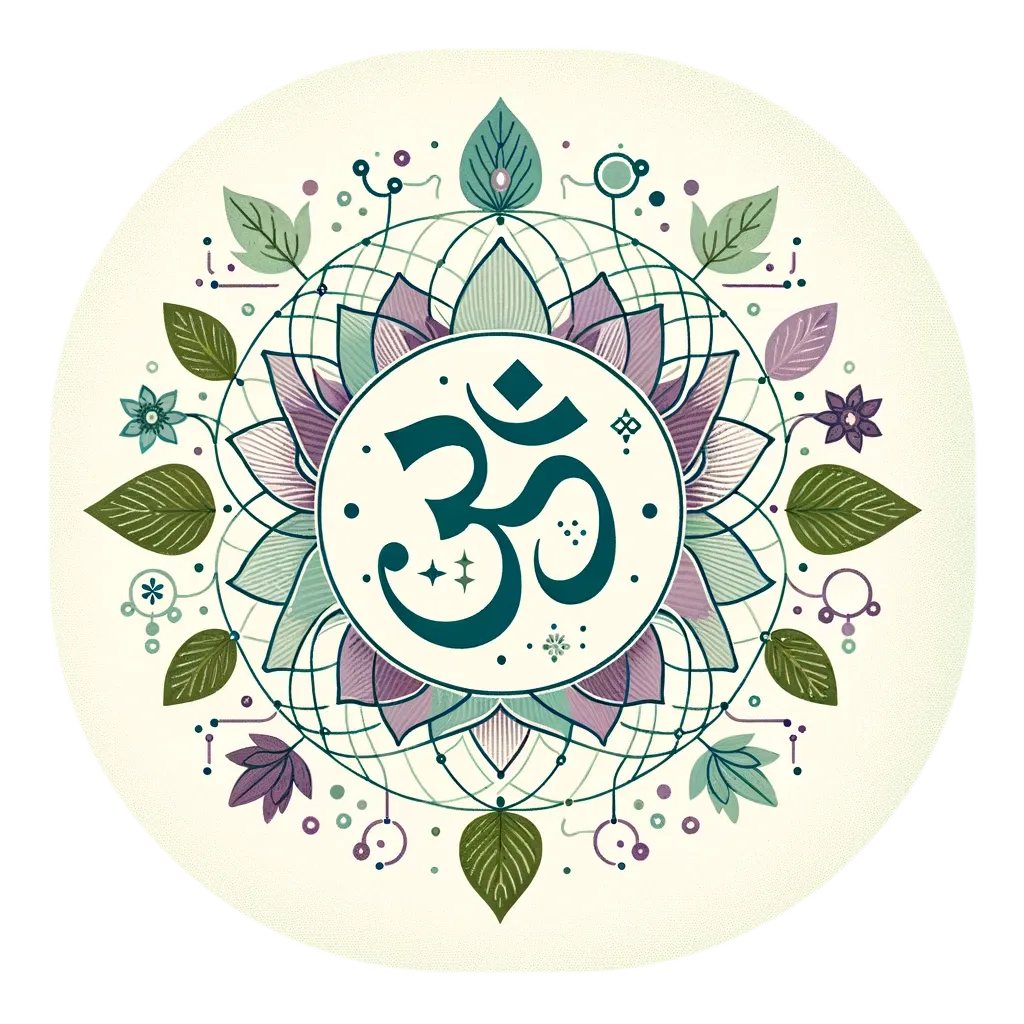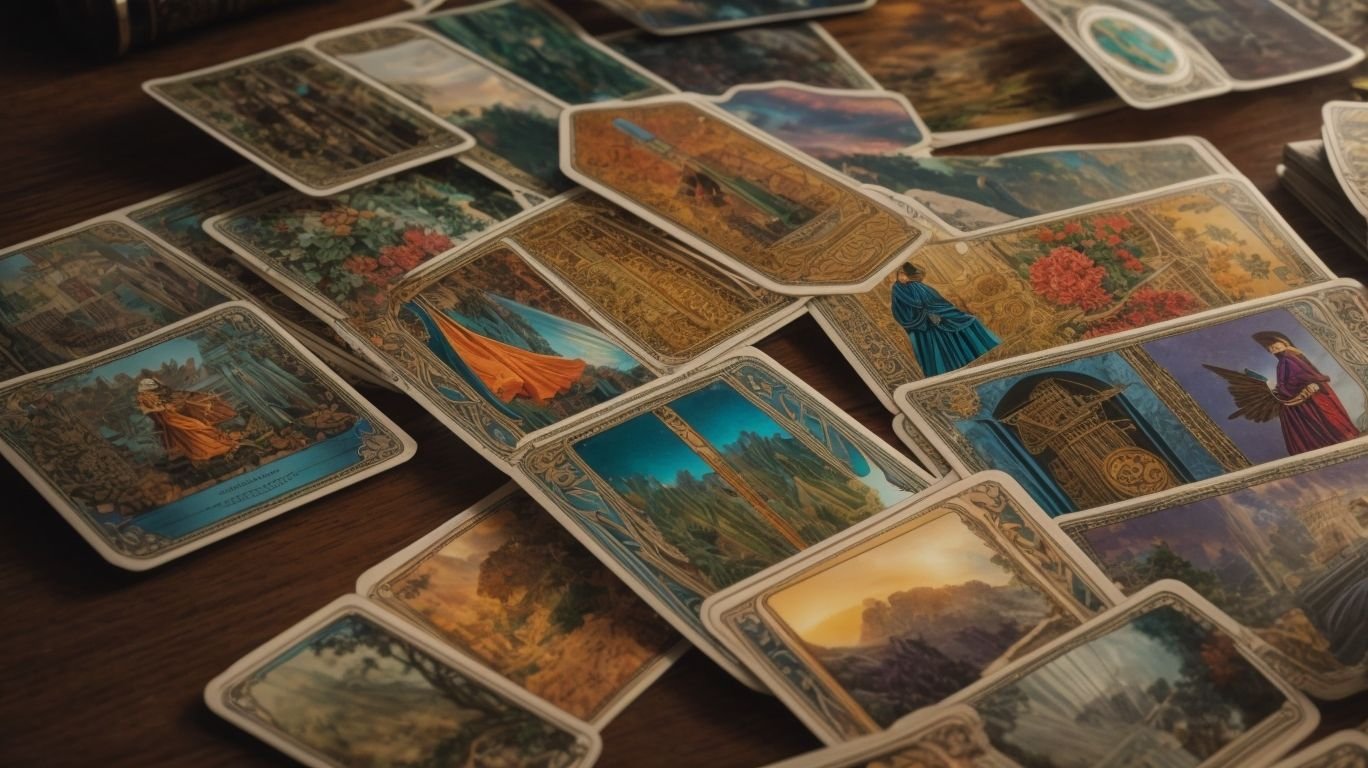Tarot cards have a long and fascinating history, dating back centuries to their origins in Europe.
From the different theories surrounding their creation to their initial use for divination, tarot cards have evolved over time to become a popular tool for fortune telling and self-reflection.
With a variety of decks available, each with its unique symbolism and meanings, tarot cards continue to captivate and intrigue people worldwide.
We will explore the origins, significance, and current use of tarot cards, shedding light on their enduring appeal.
What Are Tarot Cards?
Tarot cards are a deck of cards typically used for divination, with each card featuring symbolic imagery tied to occult practices and fortune-telling.
These cards are not just a random assortment of images but are intricately designed to represent archetypal concepts and themes that hold significance in various occult traditions. The Major Arcana cards, for instance, depict powerful universal energies such as the Fool representing new beginnings or the Death card symbolizing transformation and rebirth. On the other hand, the Minor Arcana cards delve deeper into everyday aspects of life, divided into suits like cups, pentacles, wands, and swords, each carrying its own symbolic meanings related to emotions, material wealth, creativity, and intellect.
How Did Tarot Cards Originate?
The origins of tarot cards can be traced back to their mysterious beginnings, steeped in history and esoteric symbolism that form the foundation of the tarot deck.
These ancient cards, believed to have originated in the 15th century, have captivated mystics, scholars, and artists throughout history. The symbolic representations found on the tarot deck showcase a rich tapestry of archetypes, offering insights into the human experience and providing a mirror to our innermost selves. From the Major Arcana’s allegorical depictions to the Minor Arcana’s suits reflecting everyday life, each card holds layers of meaning waiting to be unraveled by those who seek wisdom and guidance.
What Are the Different Theories about the Origin of Tarot Cards?
Various theories attempt to explain the origin of tarot cards, ranging from allegorical interpretations to esoteric connections with occult practices.
One prevalent theory suggests that tarot cards evolved from playing cards in the late Middle Ages, acquiring mystical symbolism over time. This evolution was guided by various occult influences, such as the teachings of Hermeticism and Kabbalah, which added layers of esoteric meaning to the cards.
The intricate imagery on tarot cards is often linked to spiritual archetypes and cosmic principles, reflecting a deeper understanding of the universe. The interplay between art, mysticism, and symbolism in tarot decks offers a rich tapestry for those exploring the realms of divination and self-discovery.
When Were Tarot Cards First Used for Divination?
The practice of using tarot cards for divination purposes gained prominence through psychic readings and their influence on occult traditions over the centuries.
The historical timeline of tarot cards being associated with divination practices traces back to the 18th century when they started to appear in Europe. Initially used as playing cards, their mystical symbolism was later incorporated into divination practices by occultists and mystics.
The psychic elements within the tarot deck, represented by the Major and Minor Arcana, became integral to unlocking deeper insights into the querent’s life. This integration of psychic intuition with the symbolism of the cards has endured through the centuries, shaping modern interpretations of tarot for spiritual guidance and introspection.
What Is the Oldest Known Tarot Deck?
The oldest known tarot deck dates back to an ancient practice steeped in mysticism, featuring the foundational elements of the major arcana cards.
These major arcana cards hold significant mystical symbolism, each representing profound spiritual themes and archetypal energies. The Fool, for instance, symbolizes new beginnings and unlimited potential, while The High Priestess signifies intuition and hidden knowledge. The Emperor embodies authority and structure, reflecting the importance of leadership in spiritual growth. These cards, rich in esoteric meanings, are believed to offer insights into the depths of the human psyche and the interconnectedness of the universe, making them powerful tools for divination and self-reflection in ancient mystical traditions.
What Are the Major Arcana and Minor Arcana in Tarot Cards?
Tarot cards are divided into the major arcana and minor arcana, each set representing different symbols and allegorical imagery open to interpretation through mystical symbolism.
- The major arcana consists of 22 cards that carry profound symbolic meanings and represent significant life events or archetypal energies. These cards often depict powerful figures and universal themes such as The Fool, The Lovers, and The Tower.
- On the other hand, the minor arcana consists of 56 cards divided into four suits – Cups, Pentacles, Swords, and Wands – each representing aspects of daily life and personal experiences. The minor arcana cards focus on more practical matters and day-to-day challenges, offering insights into everyday situations through their allegorical interpretations.
What Is the Meaning of Each Major Arcana Card?
Each card in the major arcana of tarot holds profound meaning tied to mythological figures, offering spiritual insight through interpretive readings.
For instance, The Fool card is often associated with the figure of The Fool, representing innocence, new beginnings, and taking a leap of faith. The Magician card embodies the energy of Hermes, the messenger of the gods, symbolizing manifestation and creative power. The High Priestess card reflects the archetype of the mysterious Persephone, inviting us to connect with our intuition and inner wisdom. By delving into these mythological connections, tarot readers can tap into deeper spiritual insights and guidance in their interpretations of the cards.
What Is the Meaning of Each Minor Arcana Suit?
The minor arcana suits in tarot cards carry symbolic meanings that form a complex system of interpretations, offering insights through symbolic interpretations.
- Each suit—Wands, Cups, Swords, and Pentacles—holds a unique set of symbols representing various aspects of human experience and life’s journey.
- Wands signify creativity, inspiration, and action, reflecting the fiery energy of passion and enterprise.
- Cups embody emotions, relationships, and intuition, akin to the fluid and ever-changing nature of water.
- Swords depict intellect, challenges, and decisions, reflecting the sharpness and precision needed for mental clarity.
- Pentacles symbolize the material world, including wealth, health, and career, indicating stability and grounding in practical matters.
How Did Tarot Cards Become Popular in Europe?
The popularity of tarot cards in Europe surged during the Renaissance era, driven by their pictorial richness and integration into occult practices.
Tarot cards, with their captivating imagery and symbolic meanings, captivated the curiosity of individuals seeking esoteric knowledge during this period. The intricate illustrations on the cards not only served as tools for divination but also sparked interest in the mystical and spiritual realms. As the Renaissance fostered a renewed interest in ancient wisdom and symbolism, the tarot found a receptive audience among scholars, artists, and mystics alike. The cards became intertwined with the exploration of the subconscious mind and the search for hidden truths, extending their influence beyond mere fortune-telling.
What Role Did Tarot Cards Play in the Renaissance Period?
Tarot cards played a significant role in the Renaissance period, embodying occult symbolism and esoteric knowledge through the creation of diverse tarot decks.
These mystical cards served as a means of transmitting hidden wisdom and insights, unlocking the secrets of the universe to those who delved into their meanings. The Renaissance era saw a proliferation of different tarot decks, each with its own unique design and interpretation. The artistic depictions on these cards not only reflected the prevailing beliefs and philosophies of the time but also sparked curiosity and contemplation among scholars and seekers of esoteric knowledge.
What Are the Different Types of Tarot Decks?
Various types of tarot decks exist, including the renowned Rider-Waite deck known for its divinatory and mystical interpretations with a strong spiritual influence.
These tarot decks offer a wide array of themes and artistic styles, catering to different preferences and practices within the realm of tarot reading.
For those drawn to symbolism and esoteric meanings, the Thoth Tarot deck created by Aleister Crowley could be a compelling choice. Alternatively, the Wild Unknown Tarot deck, highlighted by its unique animal imagery and modern design, appeals to individuals seeking a fresh perspective on traditional tarot symbolism.
Aspiring tarot readers have the opportunity to explore decks inspired by various cultural influences, such as the African Tarot deck or the Native American Tarot deck, each offering a distinct lens through which to interpret the cards.
What Are the Differences Between Traditional Tarot Decks and Oracle Decks?
Traditional tarot decks and oracle decks differ in their use of symbolism and interpretation, with traditional tarot decks emphasizing specific symbolic systems for interpretation.
- In traditional tarot decks, each card carries a rich tapestry of symbols and meanings that adhere to established systems like the Rider-Waite-Smith or Thoth. These symbols, from the imagery of the Fool to the complexity of the Ten of Cups, are deeply rooted in esoteric traditions and archetypal themes. The structured nature of traditional tarot decks provides a framework for readers to delve into layers of interpretation, tracing back centuries of mysticism and occult wisdom.
- Oracle decks, on the other hand, offer more creative freedom in their imagery and messages, allowing for a wider range of interpretations based on intuition and personal insight.
How Are Tarot Cards Used for Divination and Fortune Telling?
Tarot cards are utilized for divination and fortune-telling through various spreads and practices that require intuitive interpretation of card meanings.
Different spreads, such as the Celtic Cross or Three-Card Spread, serve as templates for laying out the cards in a specific order that influences the reading. Each position in a spread holds its own significance, guiding the reader towards a deeper understanding of the querent’s situation.
Intuition plays a crucial role in connecting the cards’ symbols and imagery to the individual’s circumstances, allowing for a more personalized and insightful reading. By honing one’s intuition, tarot practitioners can unlock the hidden meanings within the cards and provide valuable guidance to those seeking clarity.
What Are Some Common Tarot Spreads and How Are They Used?
Common tarot spreads are employed for readings, offering insight into various aspects of life through psychic abilities and the interpretation of mystical symbolism on the cards.
Among the most widely used tarot spreads is the Celtic Cross, which delves into the current situation, challenges, past influences, future outcomes, and the individual’s hopes and fears. This spread not only uncovers hidden truths but also provides guidance on how to navigate through uncertainties.
Another popular spread is the Three-Card Spread, which represents the past, present, and future, making it ideal for quick insights. Each card drawn in these spreads carries layers of meanings and connections to the querent’s life, enabling the psychic to offer profound interpretations.
What Is the Current Use and Perception of Tarot Cards?
Tarot cards are currently embraced for spiritual guidance, serving as interpretive tools that offer symbolic interpretations to seekers seeking deeper insights.
Many individuals turn to tarot cards as a means of tapping into their intuition and gaining perspective on various aspects of their lives. The cards are believed to provide a mirror to one’s subconscious mind, revealing hidden truths and offering guidance on navigating challenges. By studying the imagery and symbolism within the cards, seekers can unlock profound messages that resonate with their inner wisdom. This process of interpretation is highly personalized, allowing individuals to connect with the cards in a way that is meaningful and insightful for their unique journey.
Frequently Asked Questions
What are Tarot Cards and when were they first used?
Tarot Cards are a deck of 78 cards that are typically used for divination and self-discovery. They were first used in the mid-15th century in Europe.
How did Tarot Cards become associated with divination and fortune-telling?
Tarot Cards were originally used as playing cards for games, but in the late 18th century, they became popular among occultists for divination purposes, leading to their association with fortune-telling.
Who were the first people to use Tarot Cards for divination?
The first people to use Tarot Cards for divination were Italian nobility in the late 18th century. They were fascinated by the cards’ mystical symbols and began using them for fortune-telling.
How did Tarot Cards evolve over time?
Tarot Cards evolved from being used solely for playing games to being used for divination purposes. In the 19th century, French occultist Eliphas Levi introduced the concept of using Tarot Cards for self-discovery and personal growth.
What is the most famous Tarot deck and who created it?
The most famous Tarot deck is the Rider-Waite-Smith deck, created by artist Pamela Colman Smith and occultist A.E. Waite in 1909. It is still widely used today and its imagery has influenced many other Tarot decks.
How have Tarot Cards been perceived throughout history?
Tarot Cards have been perceived differently throughout history, with some cultures viewing them as a tool for divination and others seeing them as a form of entertainment. In the 20th century, they gained popularity as a way to tap into the subconscious mind and for personal growth.





